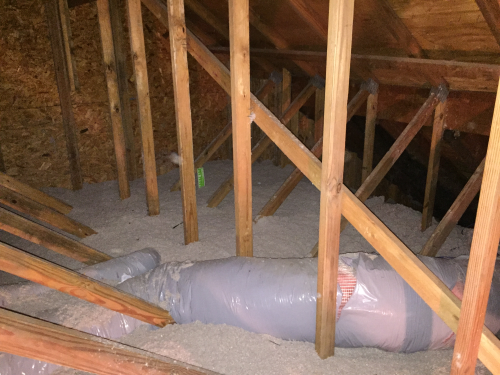There are three different types of heat transfer: conduction, convection, and radiation. When discussing insulation in my posts about installing a wall safe or installing in-wall speakers, I thought back to Mr. Roman in my high school physics class and how insulation actually works. To over-generalize, all materials – wood, air, metal – have conductive and convective heat properties. Conductive heat transfer is the spread of heat through a material, like when air outside your home heats the walls and that heat slowly moves through them (radiant heat is when the sun heats those walls). Convective heat transfer occurs when heat is transferred through movement – think of the phrase “hot air rises” and you’ll understand convection.
Air has very low conductive heat transfer (heat doesn’t move quickly through it), so it makes for a really good insulator. BUT, it also has very high convective heat transfer (air starts moving as it’s warmed up), which is why it’s not ideal for insulation. The solution? Whether you’re using blown-in insulation or the pink stuff
, you’re actually using AIR to insulate your home; that insulation traps tiny pockets of air to prevent it from moving around; the insulation maximizes the resistance to conductive heat transfer in the air, and traps the air in place to minimize any convective transfer of heat.

And that, my friends, is why you don’t want to compact blown in insulation by walking on it, or squish the pink stuff inside walls – you want to leave as much space as possible to allow the air inside the insulation to do its work!


